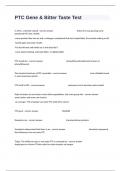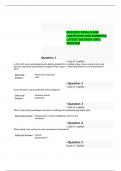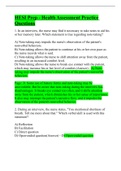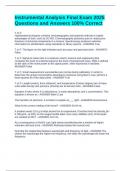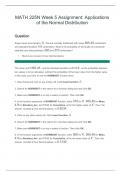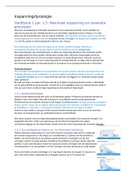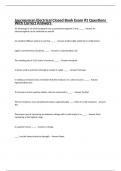Exam (elaborations)
PTC Gene & Bitter Taste Test Questions And Answers Guaranteed Success.
- Course
- Institution
In 1931, a chemist named - correct answer Arthur Fox was pouring some powdered PTC into a bottle -some powder flew into air and a colleague complained that dust tasted bitter (Fox tasted nothing at all) -tasted again and same results -Fox had friend...
[Show more]
